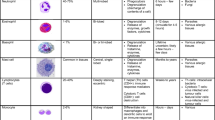Abstract
We analyse the effect of the regulatory T cells (Tregs) in the local control of the immune responses by T cells. We obtain an explicit formula for the level of antigenic stimulation of T cells as a function of the concentration of T cells and the parameters of the model. The relation between the concentration of the T cells and the antigenic stimulation of T cells is an hysteresis, that is unfold for some parameter values. We study the appearance of autoimmunity from cross-reactivity between a pathogen and a self antigen or from bystander proliferation. We also study an asymmetry in the death rates. With this asymmetry we show that the antigenic stimulation of the Tregs is able to control locally the population size of Tregs. Other effects of this asymmetry are a faster immune response and an improvement in the simulations of the bystander proliferation. The rate of variation of the levels of antigenic stimulation determines if the outcome is an immune response or if Tregs are able to maintain control due to the presence of a transcritical bifurcation for some tuning between the antigenic stimuli of T cells and Tregs. This behavior is explained by the presence of a transcritical bifurcation.







Similar content being viewed by others
References
de Boer RJ, Hogeweg P (1987) Immunological discrimination between self and non-self by precursor depletion and memory accumulation. J Theor Biol 124:343
Burroughs NJ, Oliveira BMPM, Pinto AA (2006) Regulatory T cell adjustment of quorum growth thresholds and the control of local immune responses. J Theor Biol 241:134–141
Burroughs NJ, Oliveira BMPM, Pinto AA, Sequeira HJT (2008) Sensibility of the quorum growth thresholds controlling local immune responses. Math Comput Model 47:714–725
Burroughs NJ, Oliveira BMPM, Pinto AA, Ferreira M (2010) A transcritical bifurcation in an immune response model. J Diff Equat Appl (in press)
Burroughs NJ, Oliveira BMPM, Pinto AA, Ferreira M (2010) Immune response dynamics. Math Comput Model 1–10. doi:10.1016/j.mcm.2010.02.040
Burroughs NJ, Oliveira BMPM, Pinto AA, Ferreira M (2010) Autoimmunity arising from bystander proliferation of T cells in an immune response model. Math Comput Model 1–5. doi:10.1016/j.mcm.2010.01.020
Pinto AA, Burroughs NJ, Ferreira M, Oliveira BMPM (2010) The control of immune responses by regulatory T cells. Dynamics, Games and Science, Springer Mathematical Proceedings (in press)
Robin E Callard, Jaroslav Stark, Andrew J Yates (2003) Fratricide: a mechanism for T memory-cell homeostasis. Trends Immunol 24:370–375
Glaucia C Furtado, Curotto de Lafaille M, Kutchukhidze N, Lafaille JJ, (2002) IInterleukin 2 signaling is required for CD4+ regulatory T cell function. J Exp Med 6:851–857
Hsieh CS, Liang Y, Tyznik AJ, Self SG, Liggitt D, Rudensky AY (2004) Recognition of the peripheral self by naturally arising CD25+CD4+ T cell receptors. Immunity 21:267–277
Leon K, Lage A, Carneiro J (2003) Tolerance and immunity in a mathematical model of T-cell mediated suppression. J Theor Biol 225:107–126
Leon K, Perez R, Lage A, Carneiro J (2000) Modelling T-cell-mediated suppression dependent on interactions in multicellular conjugates. J Theor Biol 207:231–254
Leon K, Faro J, Lage A, Carneiro J (2004) Inverse correlation between the incidences of autoimmune disease and infection predicted by a model of T cell mediated tolerance. J Autoimmun 22:31–42
McLean AR (1994) Modelling Tcell memory. J Theor Biol 170:63–74
Nagata S (1999) Fas ligand-induced apoptosis. Annu Rev Genet 32:29–55
Maurus de la Rosa S, Sascha R, Heike D, Alexander S (2004) Interleukin-2 is essential for CD4+CD25+ regulatory T cells function. Eur J Immunol 34:2480–2488
Sakaguchi S (2004) Naturally arising CD4+ regulatory T cells for immunological self-tolerance and negative control of immune responses. Annu Rev Immunol 22:531–562
Shevach EM, McHugh RS, Piccirillo CA, Thornton AM (2001) Control of T-cell activation by CD4(+) CD25(+) suppressor T cells. Immunol Rev 182:58–67
Schluns KS, Kieper WC, Jameson SC, Lefrancois L (2000) Interleukin-7 mediates the homeostasis of naive and memory CD8 T cells in vivo. Nat Immunol 1:426–432
Tanchot C, Vasseur F, Pontoux C, Garcia C, Sarukhan A (2004) Immune regulation by self-reactive T cells is antigen specific. J Immunol 172:4285–4291
Thornton AM, Donovan EE, Piccirillo CA, Shevach EM (2004) Cutting edge: IL-2 is critically required for the in vitro activation of CD4(+)CD25(+) T cell suppressor function. J Immunol 172:6519–6523
Thornton AM, Shevach EM (2000) Suppressor effector function of CD4+CD25+ immunoregulatory T cells is antigen nonspecific. J Immunol 164:183–190
Thornton AM, Shevach EM (1998) CD4+CD25+ immunoregulatory T cells suppress polyclonal T cell activation in vitro by inhibiting interleukine 2 production. J Exp Med 188:287–296
Utzny C, Burroughs NJ (2003) Perturbation theory analysis of competition in a heterogeneous population. Phys D 175:109–126
Acknowledgements
We thank LIAAD-INESC Porto LA, Calouste Gulbenkian Foundation, PRODYN-ESF, POCTI and POSI by FCT and Ministério da Ciência e da Tecnologia, and the FCT Pluriannual Funding Program of the LIAAD-INESC Porto LA and of the Research Center of Mathematics of University of Minho, for their financial support. M. Ferreira also acknowledges the financial support from the FCT grant with reference SFRH/BD/27706/2006. Part of this research was developed during a visit by the authors to the CUNY, IHES, IMPA, MSRI, SUNY, Isaac Newton Institute, University of Berkeley and University of Warwick. We thank them for their hospitality.
Author information
Authors and Affiliations
Corresponding author
Rights and permissions
About this article
Cite this article
Pinto, A.A., Burroughs, N.J., Ferreira, M. et al. Dynamics of Immunological Models. Acta Biotheor 58, 391–404 (2010). https://doi.org/10.1007/s10441-010-9117-6
Received:
Accepted:
Published:
Issue Date:
DOI: https://doi.org/10.1007/s10441-010-9117-6




